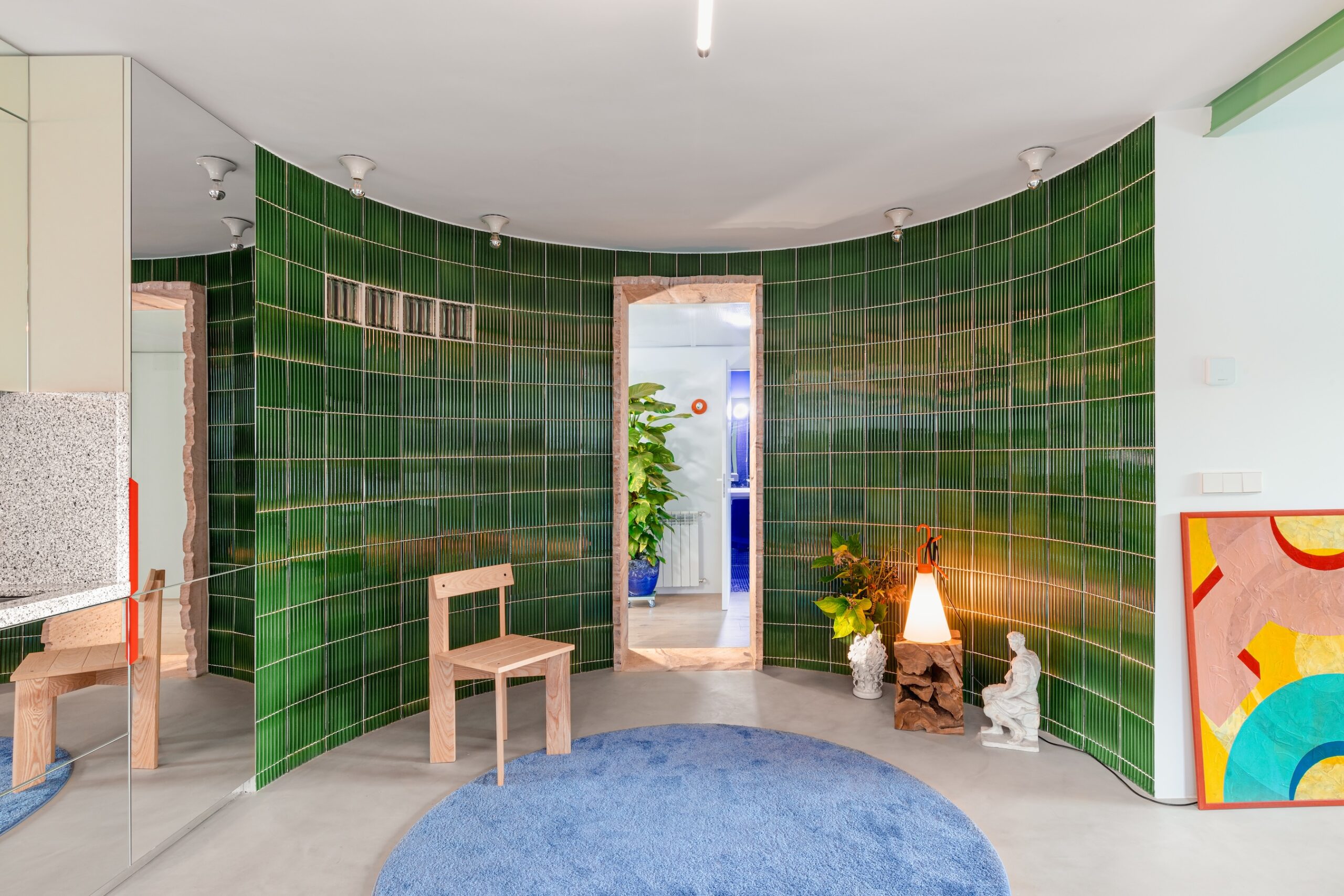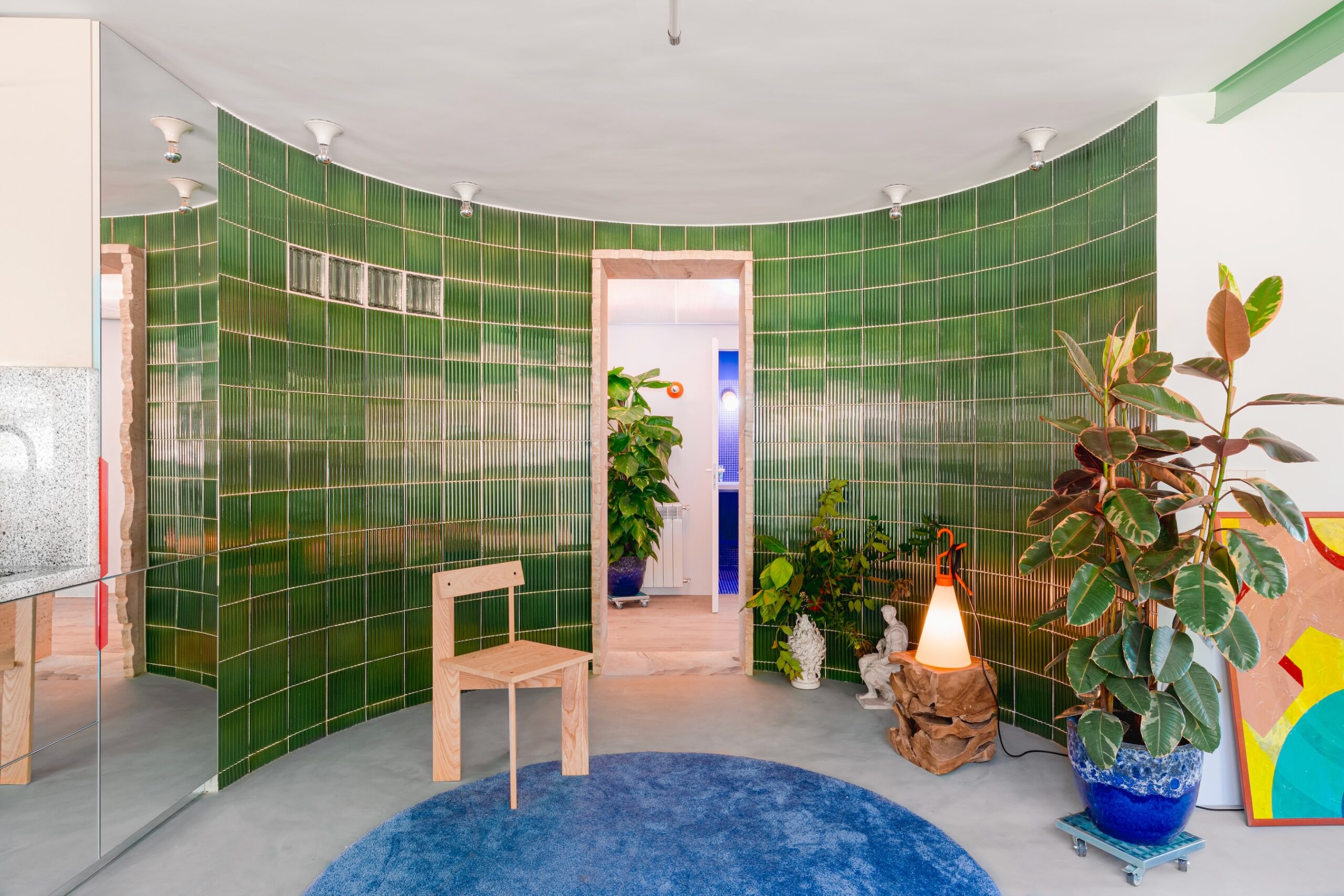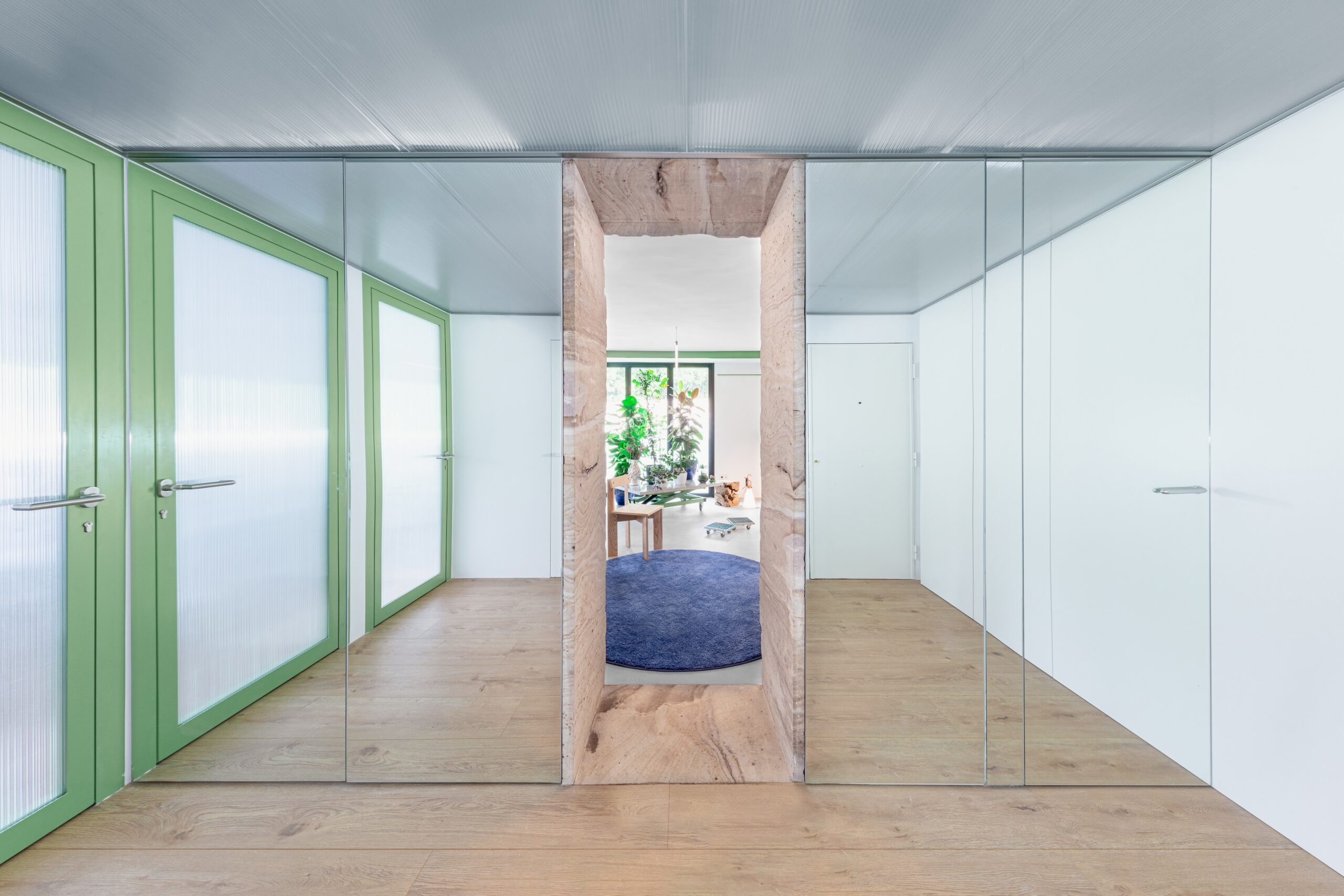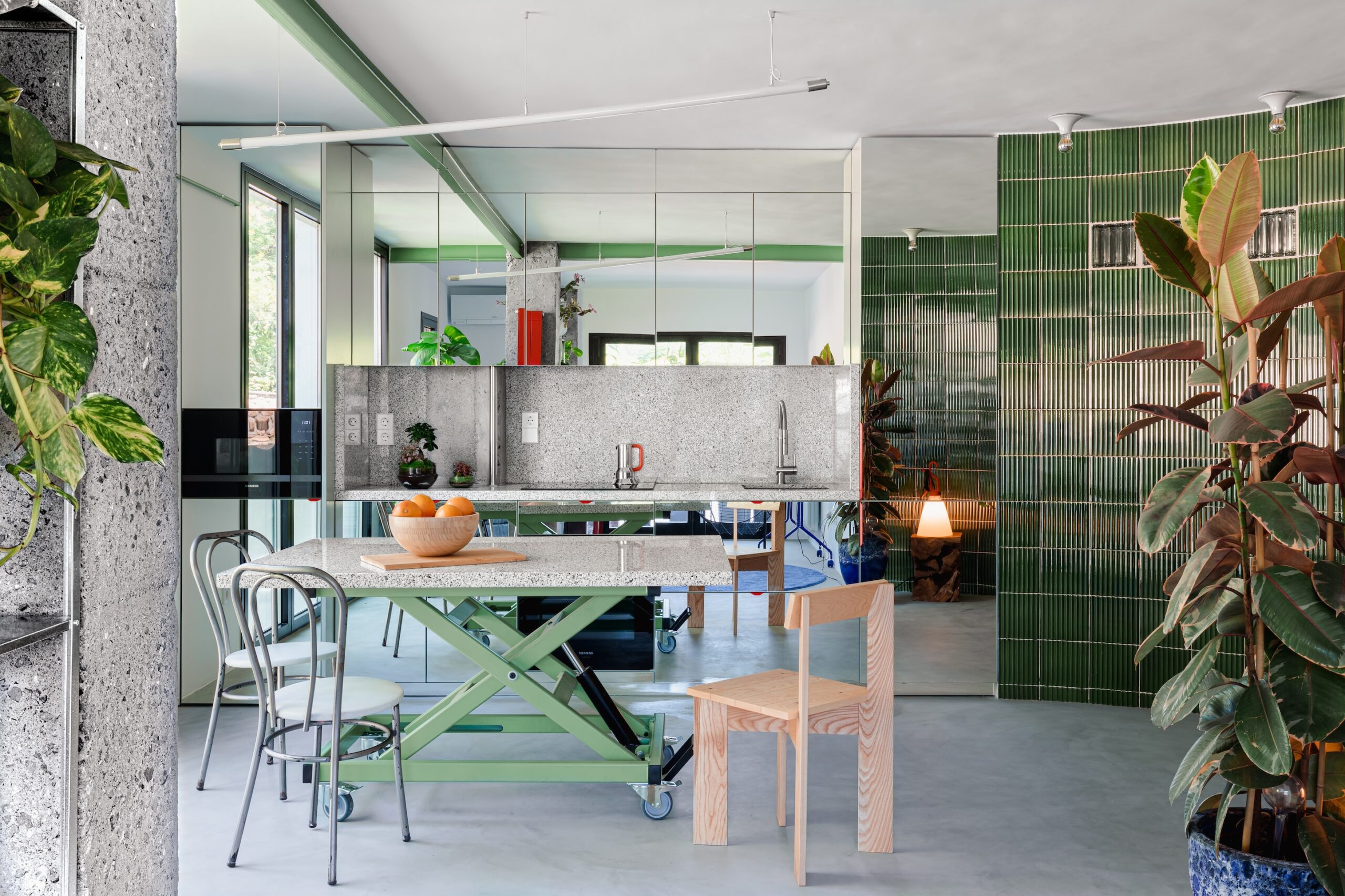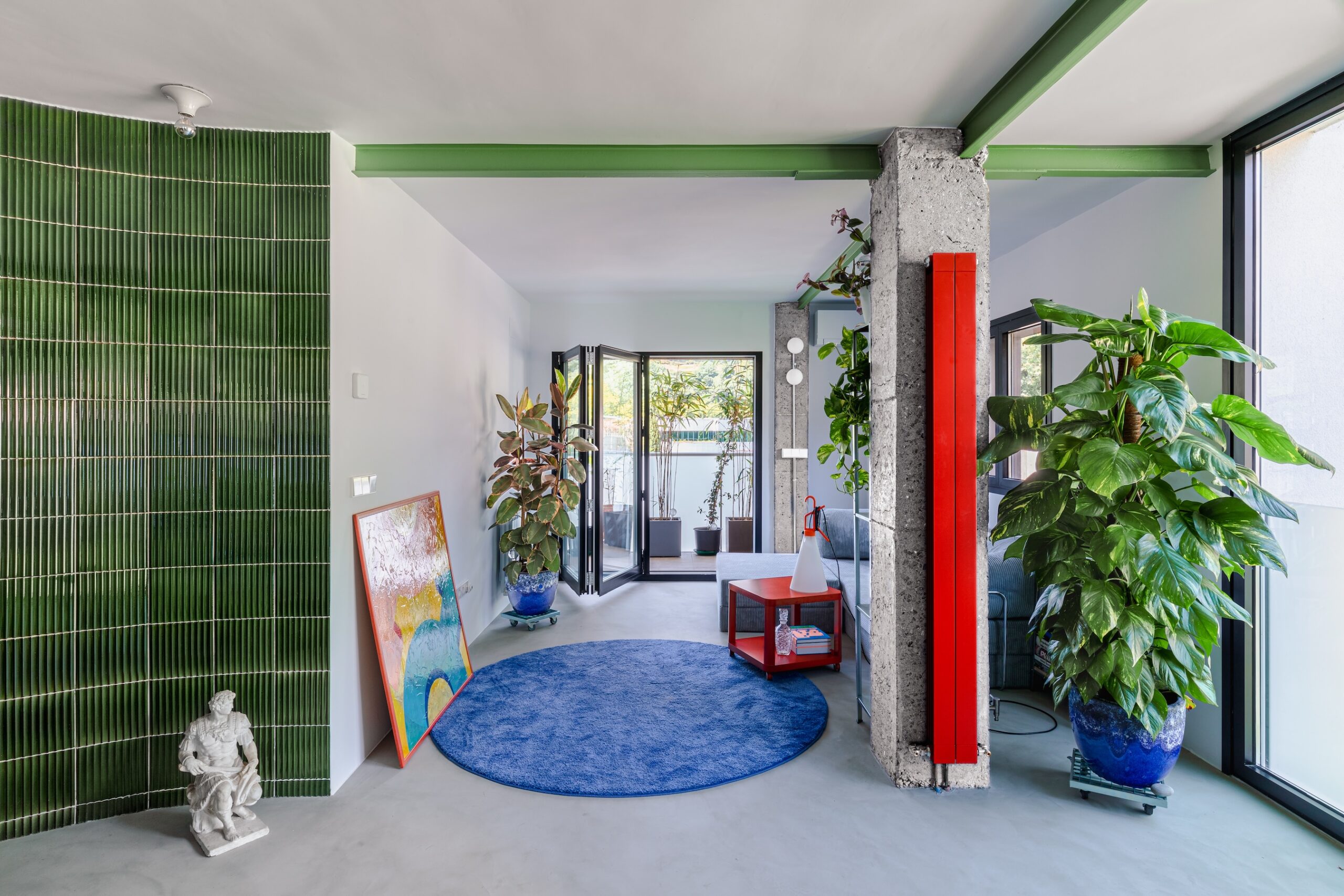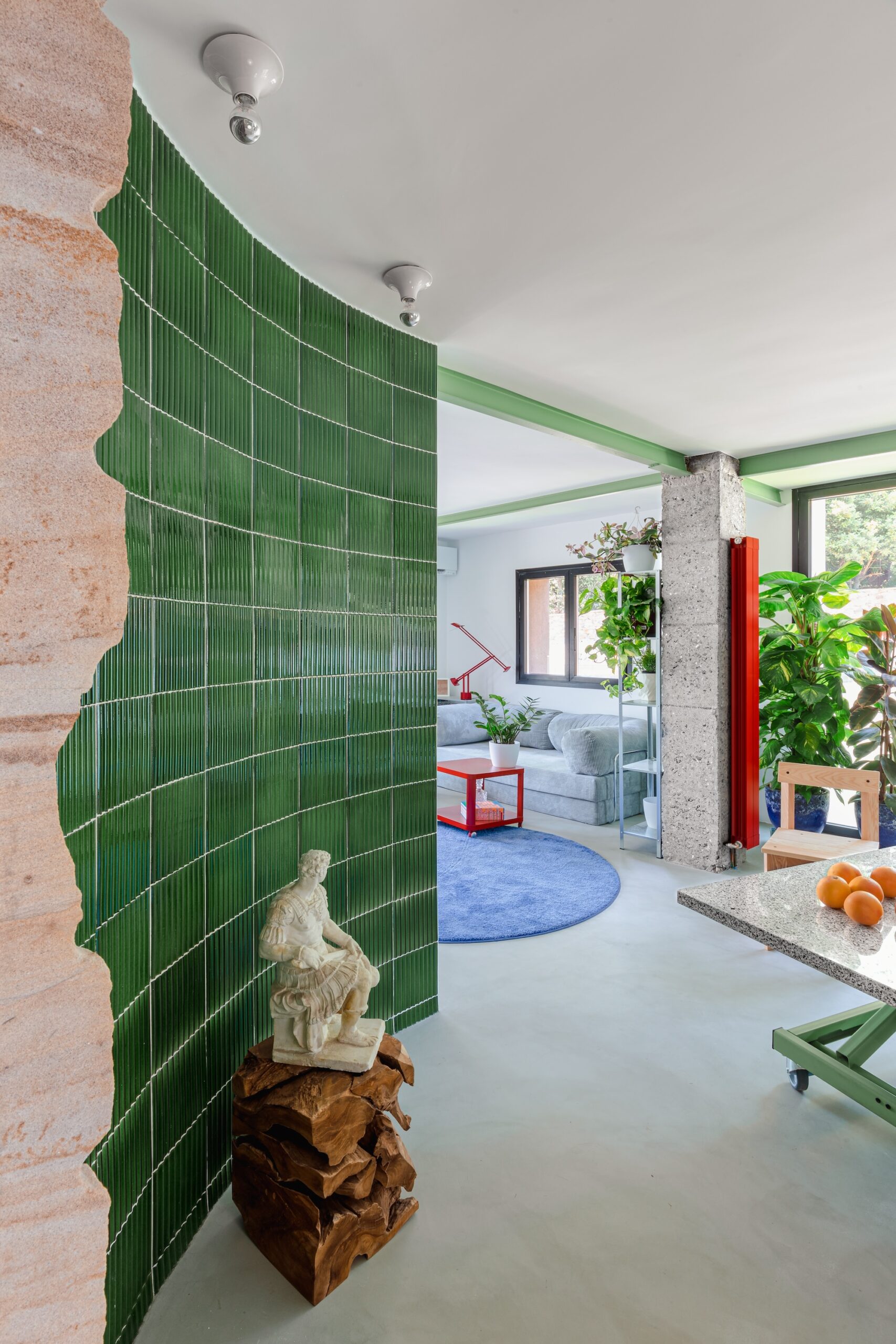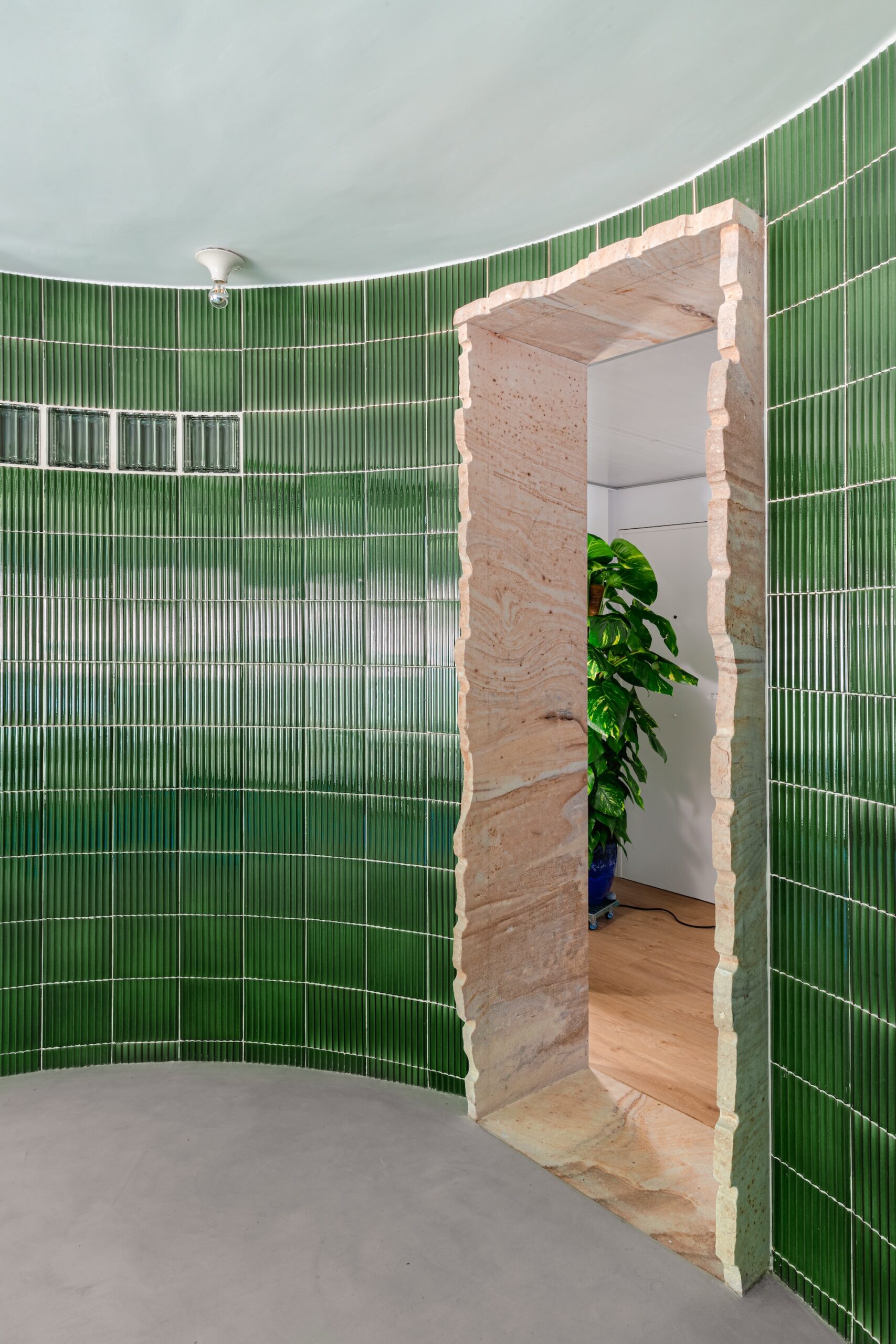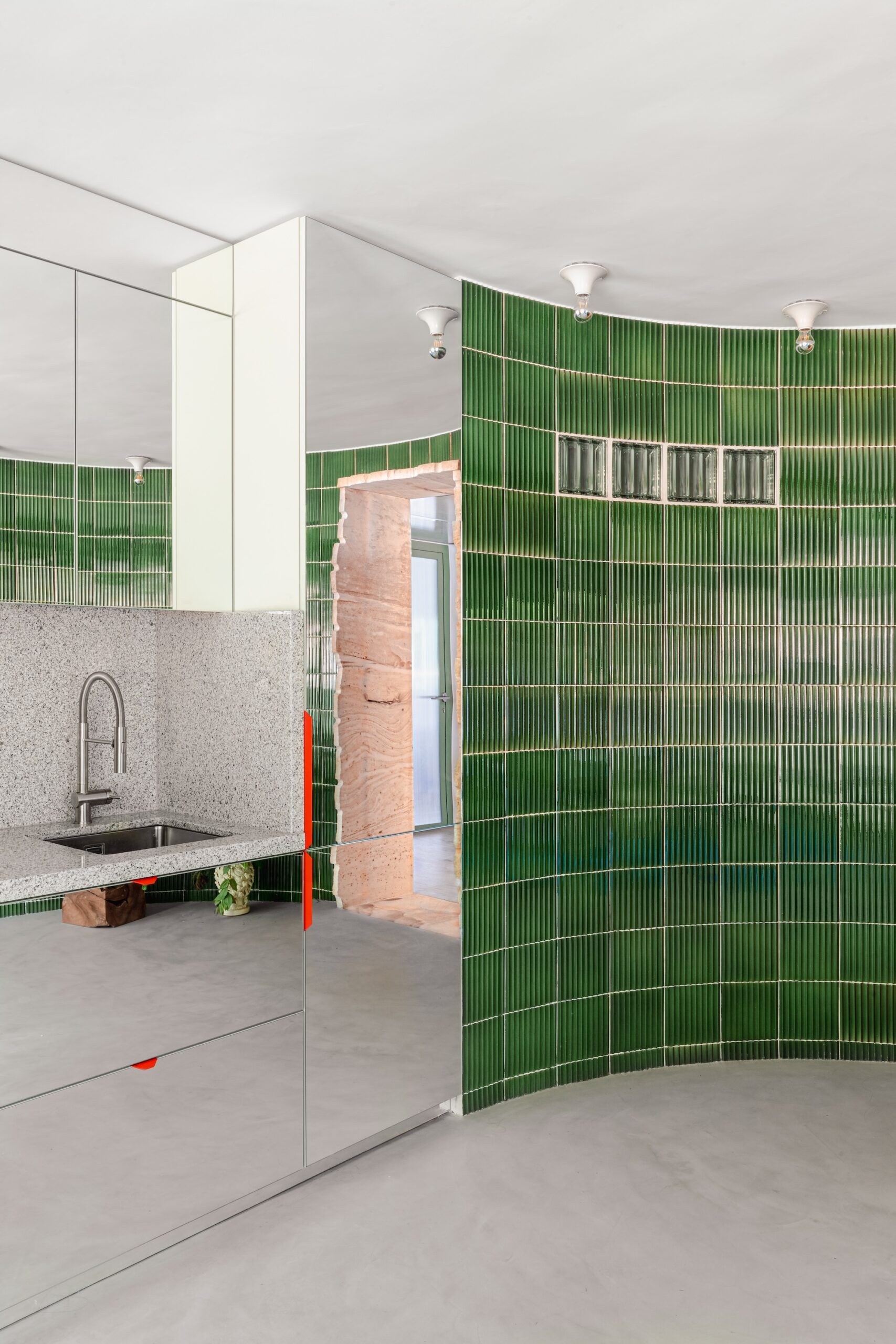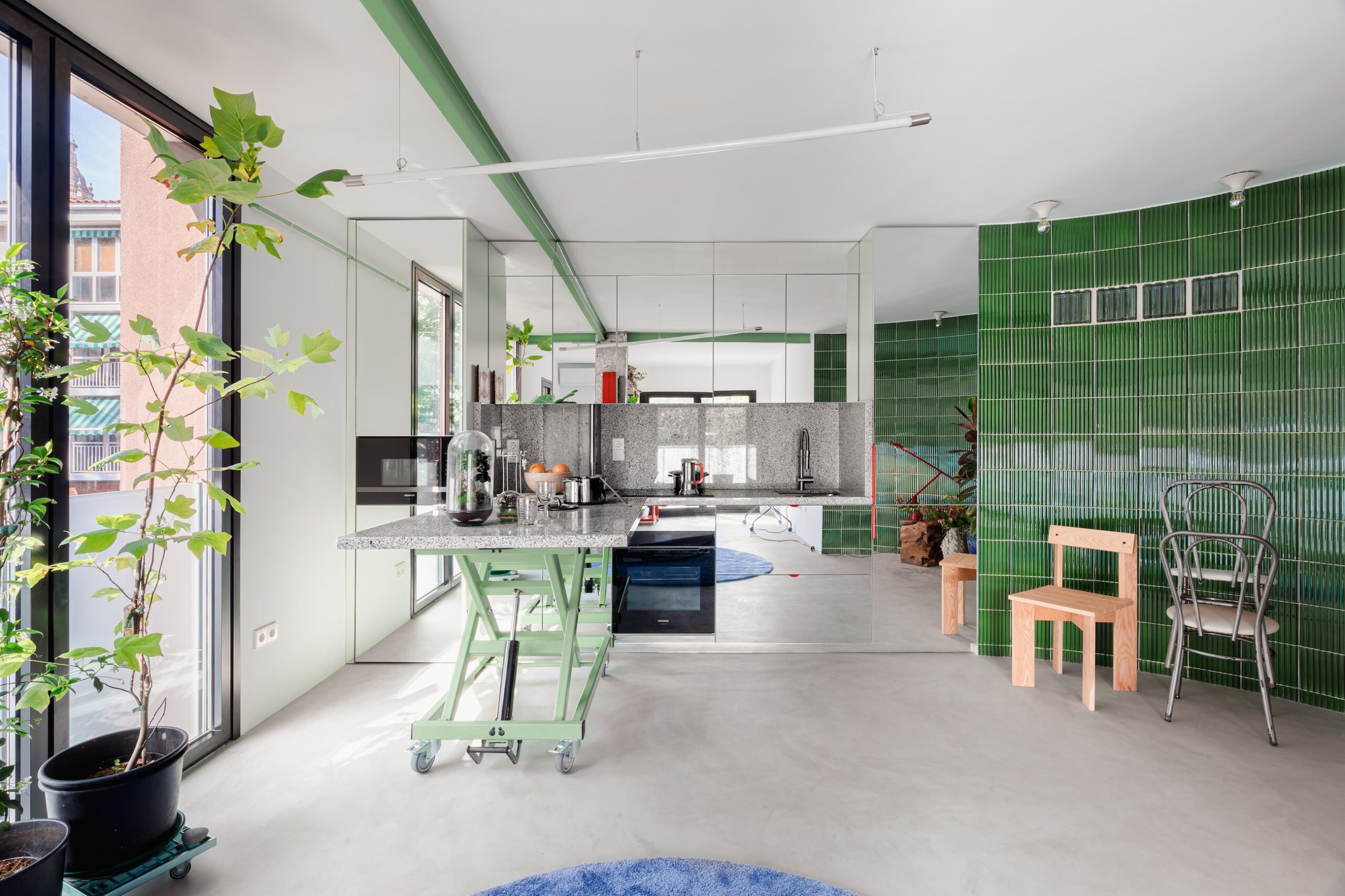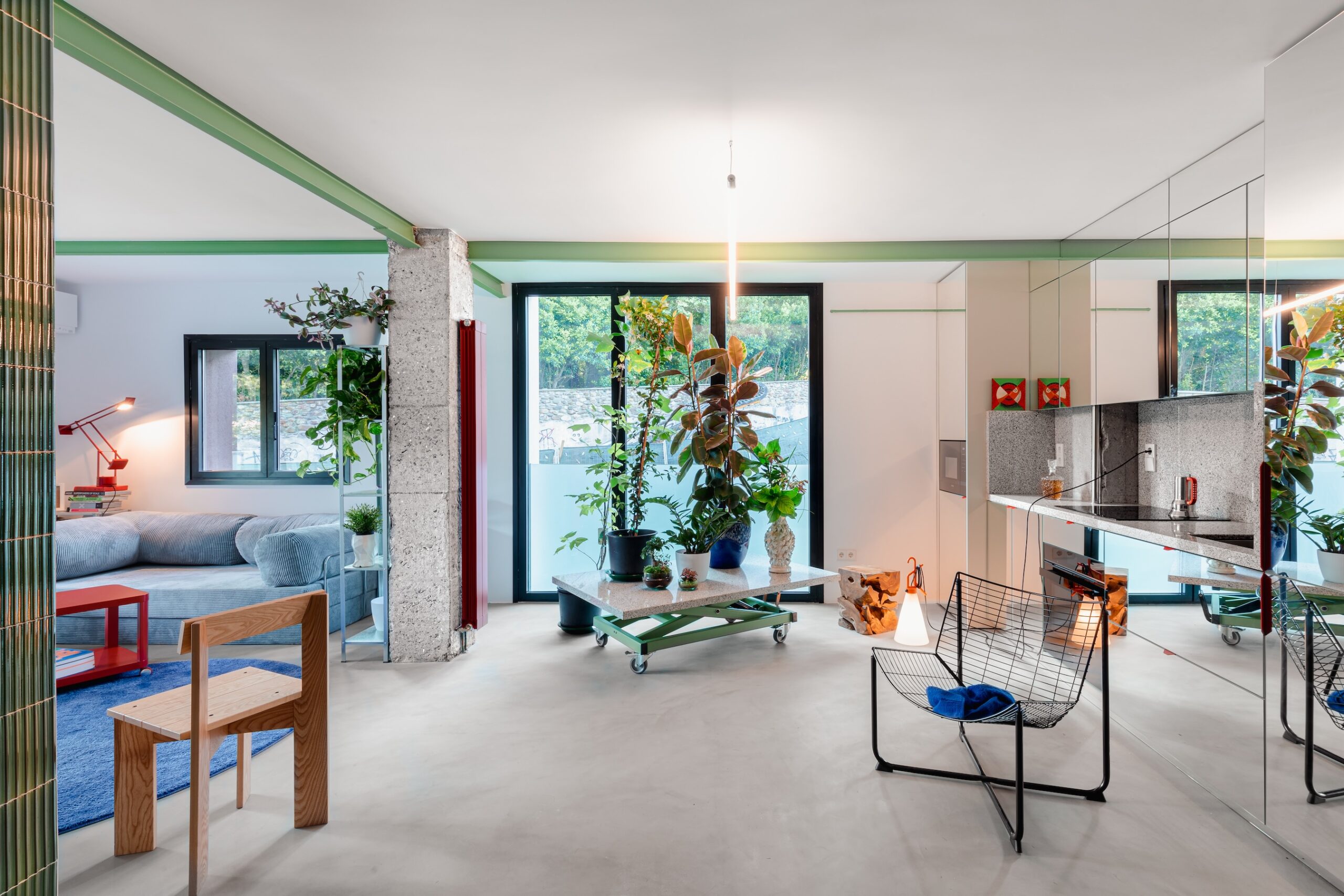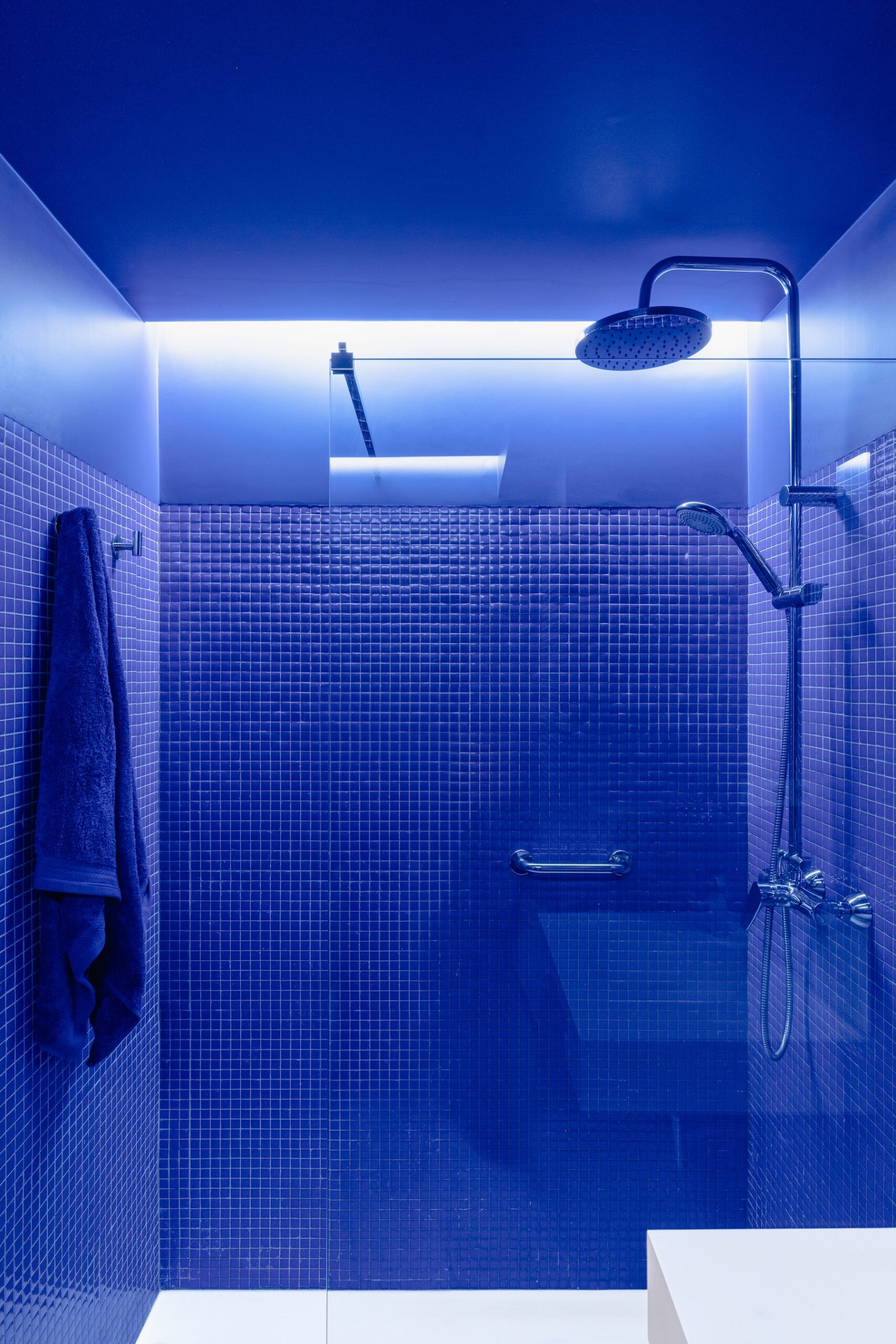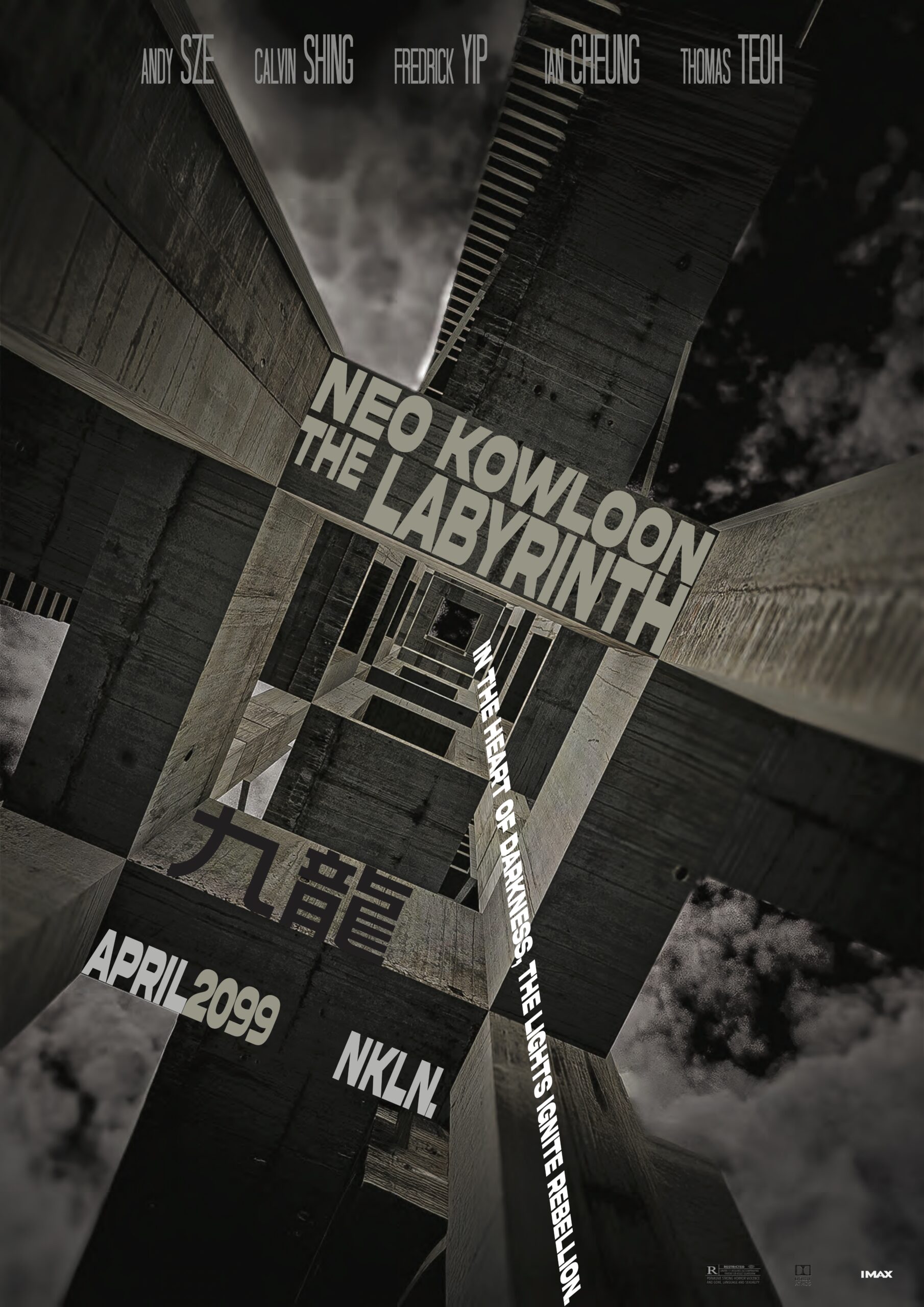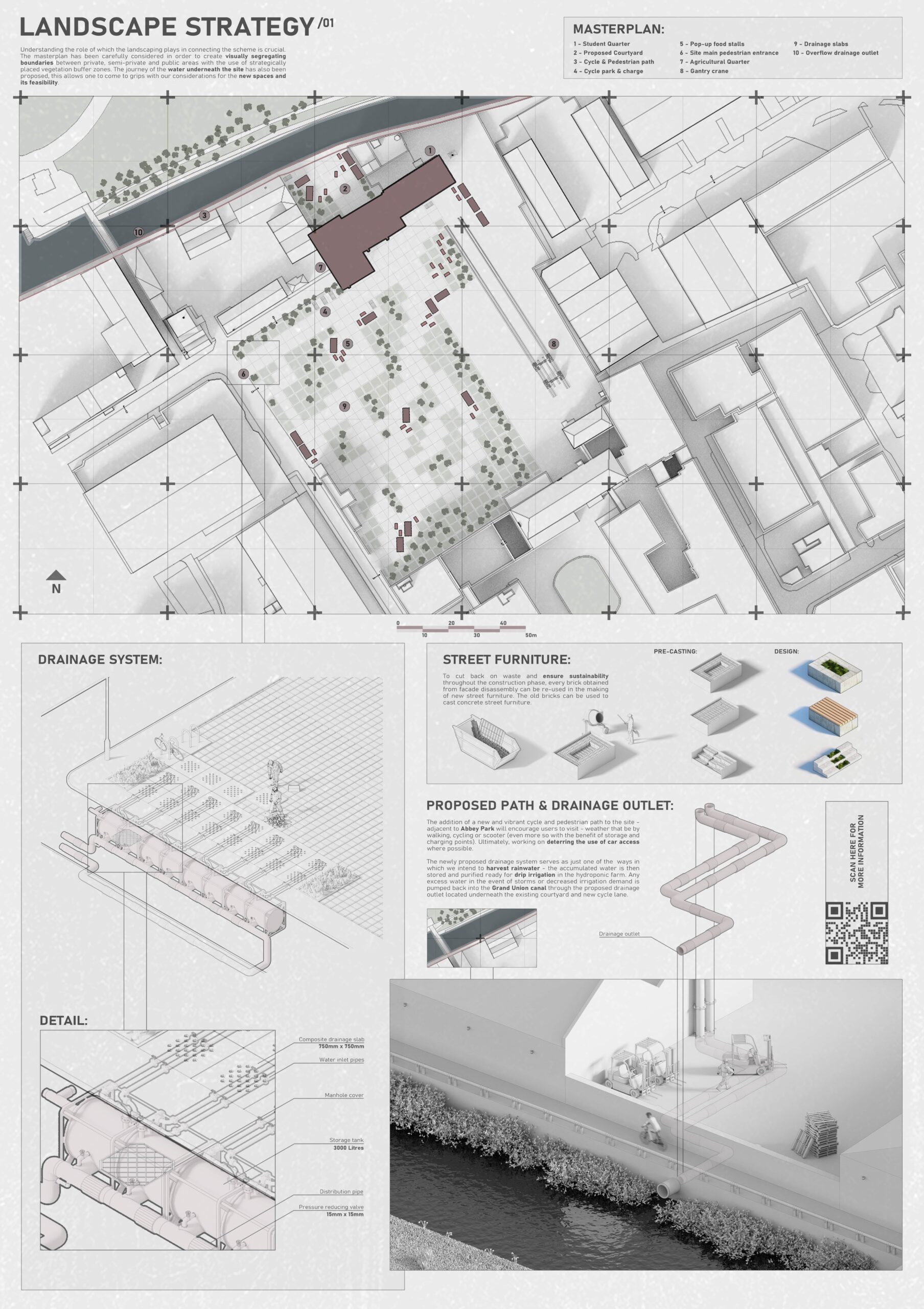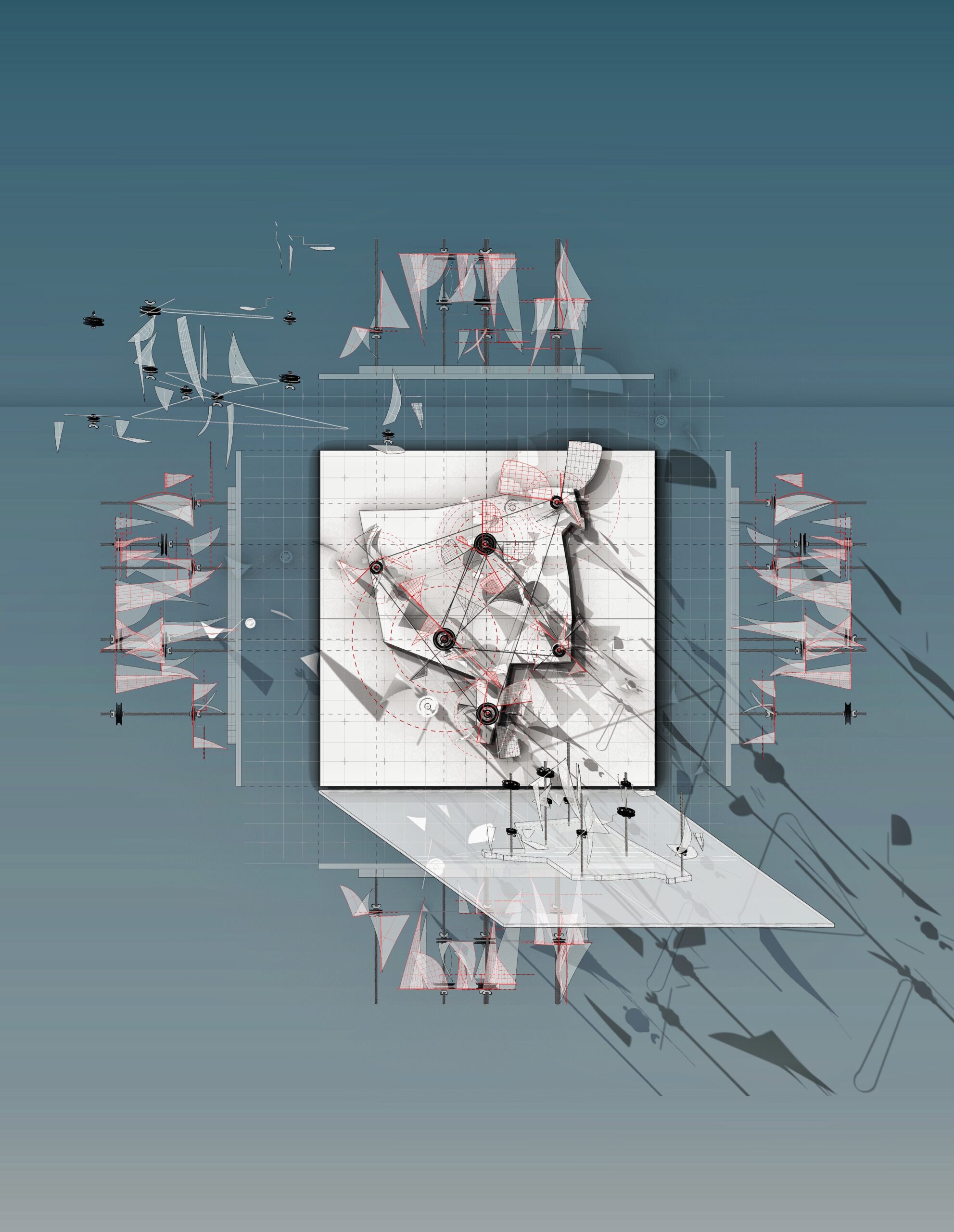Unplanned Domestic Prototype: PROT/USRBL/SE08
Unplanned Domestic Prototype [PROT/USRBL/SE0] emerges as a critical investigation into the transformative potential of a 60 m² apartment located in a building constructed in 1966, part of Spain’s 1959 Stabilization Plan.
This plan, driven by the country’s post-war economic recovery, promoted minimal, standardized, and compartmentalized housing to optimize the “efficiency” of domestic spaces. These apartments, designed under the strict ideals of the nuclear family model, embodied a rigid, uniform, and limited approach to habitation, with closed spaces and fixed functionalities.
In response to this legacy, Unplanned Domestic Prototype [PROT/USRBL/SE0] challenges the principles of standardization and reimagines the potential of living spaces in the 21st century. Rather than perpetuating the static nature of its original design, the project seeks to multiply and integrate architectural possibilities. The space becomes a platform for diverse activities and domestic agents, enabling more flexible and pluralistic coexistence. It celebrates the diversity of social relationships, local traditions, and the growing fluidity of domestic life. This approach advocates for flexible environments that can evolve over time to meet the changing needs of present and future inhabitants.
A central intervention in the project is the glazed ceramic curved wall with a 175-degree arc, an element that disrupts the rigid layout of the original apartment. This wall serves not only as a functional organizer of space but also as a material statement resonating with the local context and its traditions. Beyond its visual appeal, the wall redefines the logistical conventions of domestic storage and transforms the apartment into an adaptable, multifunctional space. It integrates a series of cupboards, cabinets, kitchen furniture, bathroom fixtures, shelves, and closets, each maximizing the use of available space. At one vertex, the wall merges with a mirrored showcase that conceals conventional appliances, enhancing the sense of fluidity and openness in the space.
One of the project’s most remarkable elements is the use of San Sebastián sandstone, a material deeply connected to the region’s geological and cultural context. The stone not only provides a tactile and visual link to the local landscape but also represents a critical commitment to the geopolitics of materials. Instead of relying on imported materials like marble or stone from international quarries, the project elevates this local, often modest, material to a central role in the intervention. Its irregular form, shaped by local extraction methods, compels reflection on the more aggressive extractivist practices associated with global supply chains. By exposing the raw, unpolished texture of the stone, the design invites deeper contemplation on how materials are sourced and the labor and environmental implications of their extraction.
Integrating this geological narrative into the domestic space challenges the conventional conception of polished, highly finished surfaces in architecture. The sandstone, with its rough texture and visible layers, serves as a tangible reminder of the local land and the extraction processes that shaped it. Its presence in the design evokes questions about sustainability, resource extraction ethics, and the impact of global trade on local landscapes. This approach offers a new understanding of materials, not as commodities to be hidden but as integral parts of the architectural experience that provoke reflection and engagement with the broader world.
The project further reinforces this connection to the environment by incorporating mobile devices and locally sourced materials throughout the space. An adjustable-height island made from repurposed national granite and discarded structures from local carpentry workshops adds flexibility and adaptability. These elements can be relocated within the space to accommodate various social assemblies, fostering interaction and collaboration. Additionally, other local materials, such as reused tree roots for stools, aluminum and steel joinery from nearby metal industries, and chairs made from recycled aluminum tubes from a local restaurant, underline the project’s commitment to its productive landscape.
In essence, Unplanned Domestic Prototype [PROT/USRBL/SE0] is an experimental response to the challenges of contemporary housing renovation. It creates a framework for questioning how we inhabit spaces today, offering not a definitive answer but a provocation. The project challenges conventional notions of domesticity, promoting a form of architecture that embraces diversity and remains open to continual redefinition. By deeply engaging with local materials and their histories, the prototype acts as a platform for reflecting on the political, economic, and environmental narratives that shape how we build and inhabit our world.
Lead Architects: Ismael Medina Manzano
Collaborators: Sofía Larumbe, Pablo Vives
Builder: Urdaintzi
Areas: 60 sqm
Dates: 2024 completion
Project location: San Sebastián, Gipuzkoa, Spain
Architect Firm: Ismael Medina Manzano
Website




